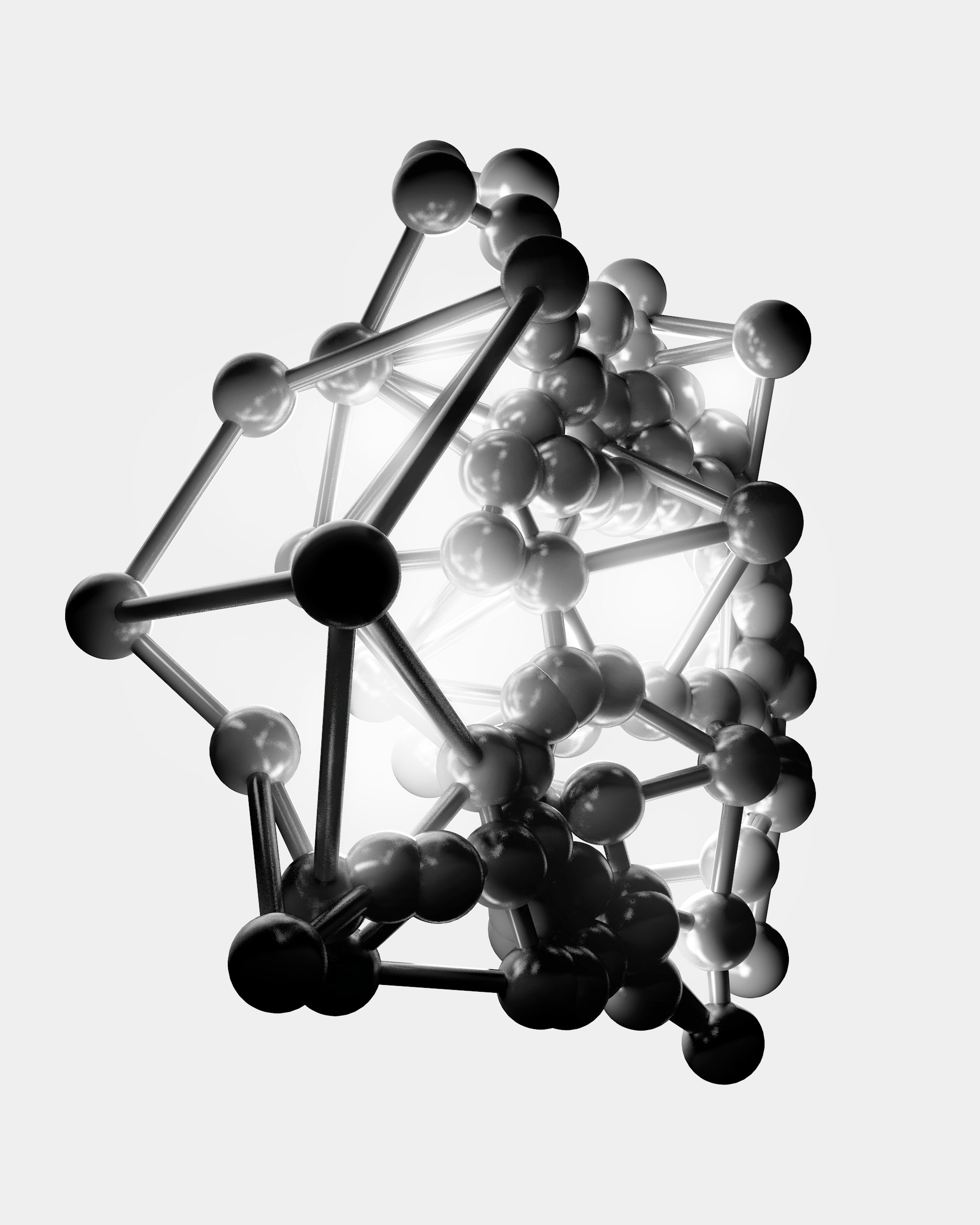Peptides might seem simple on the surface — just short chains of amino acids — but making them is anything but. Behind every vial is a complex process that involves precision chemistry, controlled environments, and strict quality control to make sure what ends up in the final product actually works the way it should.
If you’ve ever wondered how peptides are made, or why some products are more stable or effective than others, this article will walk you through the full process.
Step 1: Building the Chain – Amino Acid by Amino Acid
Peptides are made up of amino acids — the same basic building blocks that make up proteins. But instead of letting nature do its thing slowly inside the body, we build them in the lab using a method called solid-phase peptide synthesis (SPPS).
Here’s the short version:
You start with a solid resin base. Then you add amino acids one at a time in a specific order, like assembling beads on a string. Each amino acid is protected by special chemical groups to make sure they link up in the right sequence and don’t react with the wrong parts.
It’s done step by step — rinse, bind, rinse again — until the full chain is built. Even a small peptide like BPC-157 might take 157 steps to create. One mistake in the sequence and the whole thing is off.
For example, ACE-031, one of the more complex peptides we offer, has a longer amino acid chain and includes multiple disulfide bridges (bonds between sulfur atoms in different parts of the molecule that help the peptide hold its 3D shape). Synthesising it can involve well over 400 individual steps — each step adding or protecting a single amino acid, with multiple purification and folding stages in between. It isn’t just time-consuming — it requires precision at every stage to avoid misfolding or sequence errors. It’s a good example of why high-purity, correctly folded peptides aren’t easy to produce — and why cutting corners leads to weak or completely inactive product.
Folding a complex peptide like ACE-031 can take 12 to 72 hours once the sequence is built. If misfolding occurs — which is common in complex chains — it can take even longer, or require full repetition of the folding cycle.
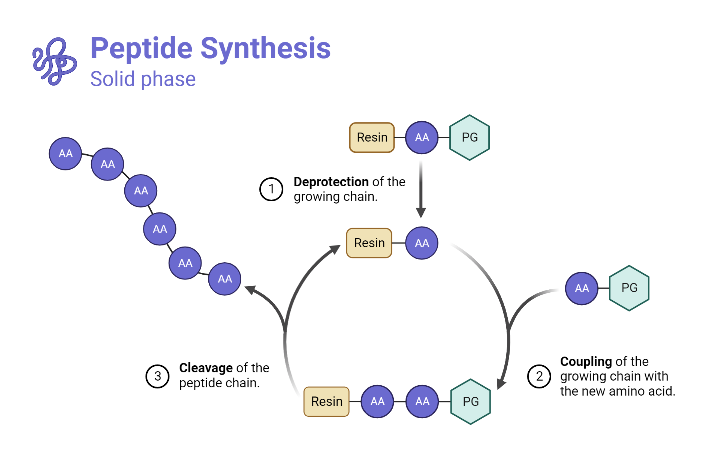
Peptides are built one amino acid at a time on a solid resin base using a process called solid-phase peptide synthesis (SPPS). Protecting groups (PG) control which parts of the molecule react at each step.
Step 2: Cleaving & Folding the Peptide
Once the chain is built, it’s “cleaved” off the resin — meaning it’s cut loose from the solid base. At this point, the peptide is technically complete, but it’s still raw and messy.
For peptides that need a specific 3D structure (like ones with disulfide bonds, which help them fold into a certain shape), the next challenge is folding them correctly. Peptides don’t just sit flat — their shape actually affects how they bind to receptors and how effective they are.
This folding is delicate. Too much heat or the wrong environment can cause misfolding, which means a less stable or less bioactive peptide.
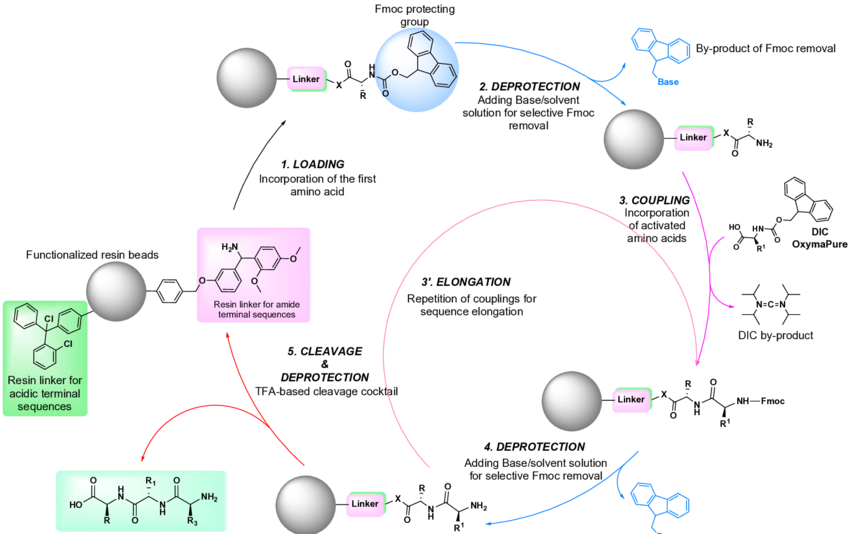
More complex peptides like ACE-031 can require hundreds of precise steps to assemble correctly — with special attention to folding, bonding, and purification.
Step 3: Purification – Sorting the Good From the Garbage
Even with high-end equipment, not every strand comes out perfect. After synthesis, you’ll have a mix of correctly sequenced peptides, partially built fragments, and unwanted byproducts.
To isolate the good stuff, the batch goes through high-performance liquid chromatography (HPLC) — a method that separates the usable peptide from the trash based on size, charge, and chemical properties.
At this stage, purity matters. A high-quality peptide should be 95%+ pure. Anything lower means more junk in the mix — which can affect results, stability, and safety. Many of our peptides carry a purity of 98% or higher.
Step 4: Lyophilization – The Freeze-Drying Process
Once the peptide is purified, it’s turned into a stable, dry powder through a process called lyophilisation (freeze-drying). This is what gives it that light, fluffy, white (or off-white) look in the vial.
Here’s why lyophilisation matters:
- It improves shelf life by removing moisture.
- It helps maintain stability during shipping and storage.
- It allows the peptide to be easily reconstituted with bacteriostatic water before use.
But freeze-drying isn’t just chucking it in the freezer. It requires low temperatures, vacuum pressure, and time — and if done incorrectly, it can degrade the peptide or ruin its solubility.
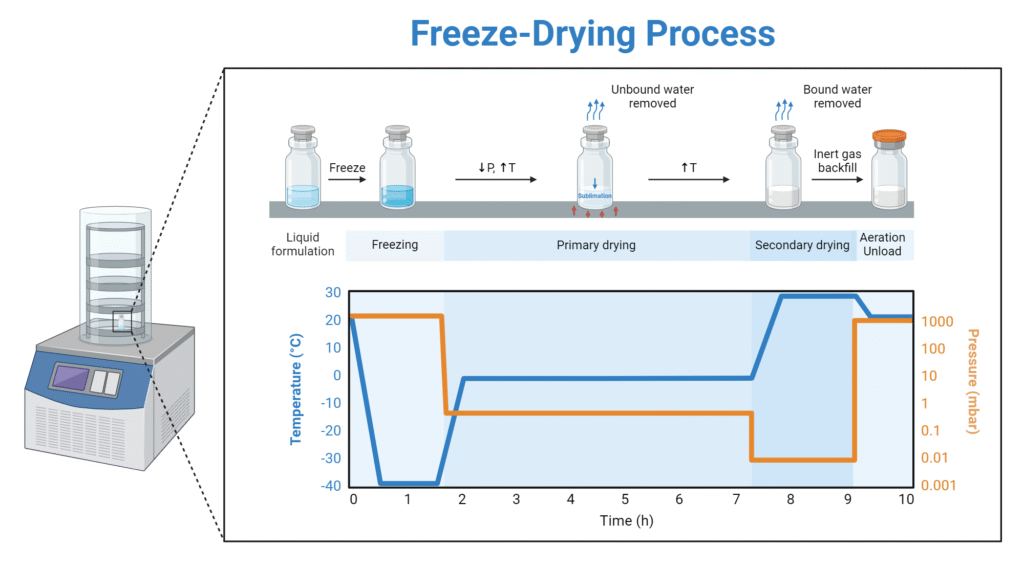
After synthesis and purification, peptides are freeze-dried through lyophilisation to increase shelf life and maintain long-term stability.
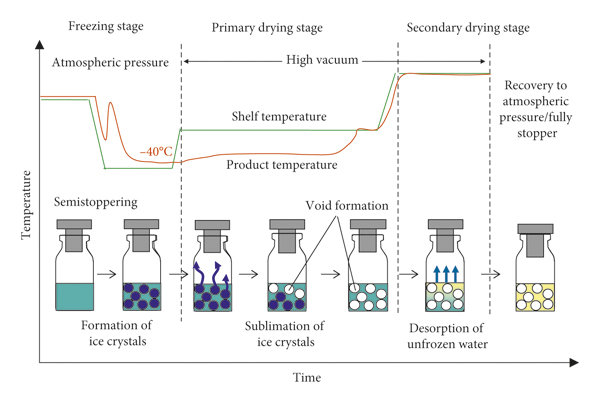
Peptide vials go through freezing, vacuum drying, and secondary drying in a lyophiliser. This process removes moisture while preserving structure and potency.
Green and red curves represent the shelf temperature and product temperature, respectively.
The Challenges in Manufacturing Peptides
Making peptides isn’t just about stringing together amino acids — it’s about making sure enough of the synthesised material is usable and stable before it ever makes it into a vial.
Here are a few challenges manufacturers face:
- Sequence sensitivity: Longer or more complex peptides are harder to synthesise cleanly.
- Stability: Some peptides degrade quickly unless stored or handled correctly.
- Yield: Even small peptides can have low yields — meaning a lot of material gets discarded.
- Contamination risks: Sterility, proper filtration (like 0.22 μm), and clean-room conditions are essential.
This is why quality varies massively between suppliers. It’s also why PlatPharma tests for both purity (HPLC) and identity/potency (Assay) on every batch — because just hitting one doesn’t guarantee a legit product.
Wrapping It Up
Behind every peptide is a long process of chemistry, purification, and precision. From amino acid sequencing to freeze-drying, every step has to be dialled in — or you end up with an unstable, underdosed, or useless product.
Next time you’re looking at a vial of BPC-157, TB-500, or any other peptide, just know: it took hundreds of steps to get that single vial into your hands — and know that we didn’t cut any corners in the production of our products. What you have is hours and hours of near perfection in a bottle.
That’s the PlatPharma standard.

